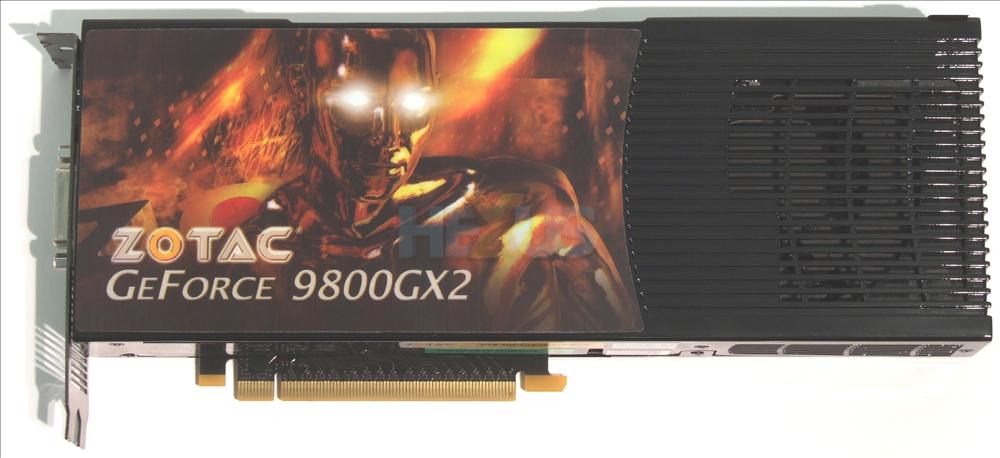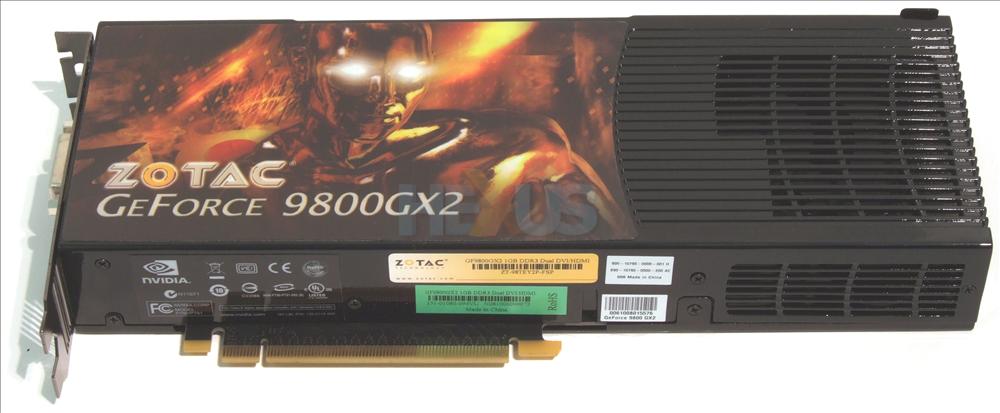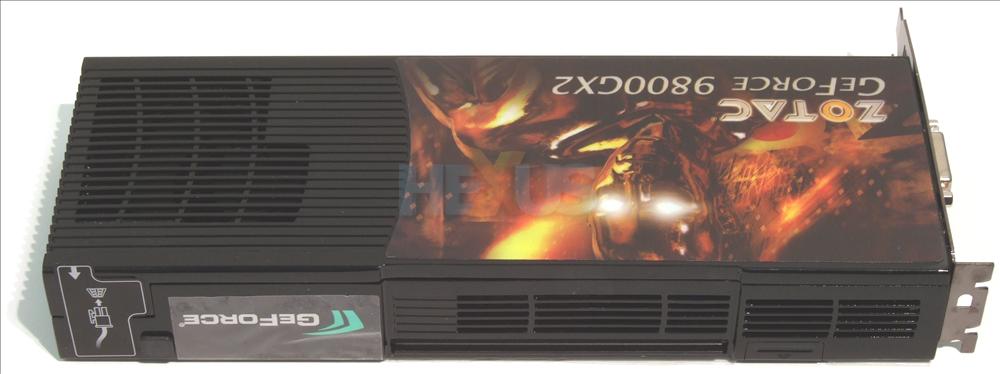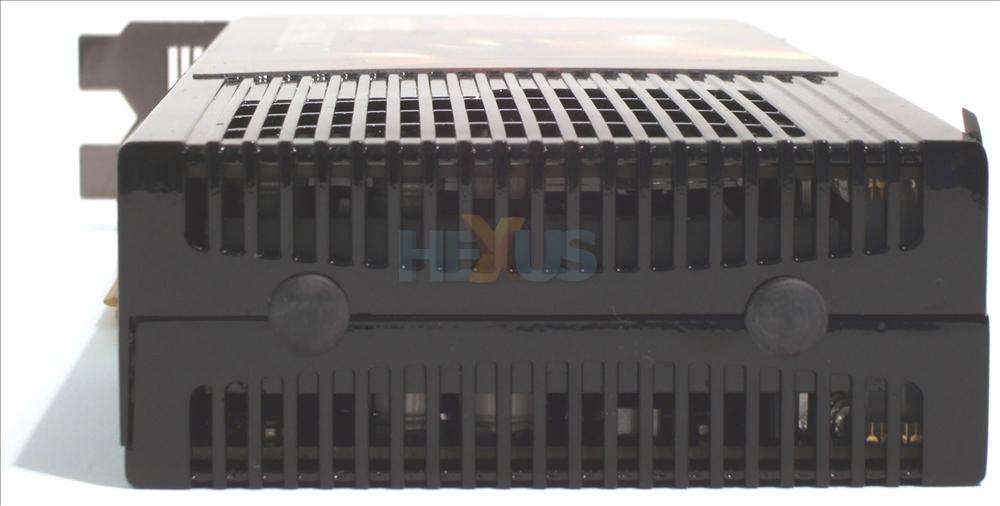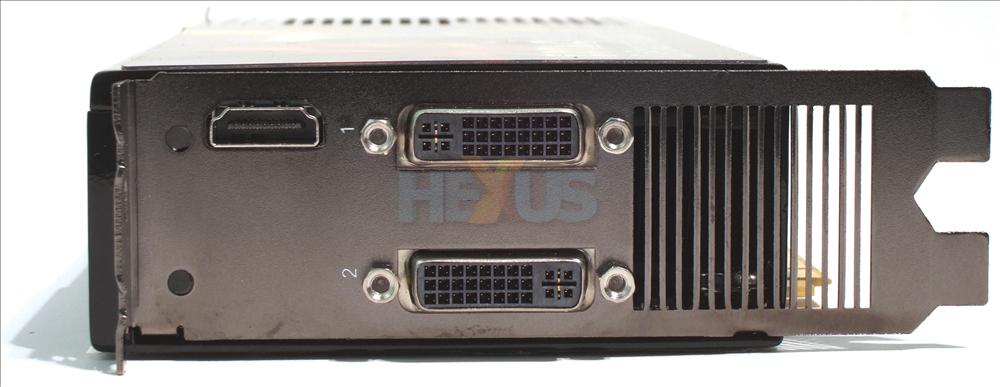ZOTAC's GeForce 9800 GX2
NVIDIA reckons that housing two GPUs on two PCBs and then arranging them in a face-to-face manner is better, thermally, than having them situated on the same PCB - as per the Radeon HD 3870 X2, and that's why there's no outward sign of cooling.
The cooling enclosure - which completely covers the card and hides the innards - concurrently cools both GPUs, with the heatsink sitting in-between. Take a look at the water-cooled eVGA to see the basic layout.
The card is large, measuring in at 267mm x 111mm x 41mm (WxDxH), but, like the GeForce 8800 GTS 512/GTX/Ultra cards, the size means that it only takes up an extra slot than normal.
It needs to be well-screwed-in, however, as it weighs a whopping 1,150g, beating out the 1,037g Radeon HD 3870 X2 in the fatty stakes, which is almost identical in size, too.
ZOTAC's card, like practically everyone else's, is reference, manufactured on behalf of NVIDIA and manufacturer-discernible via the stick that's added to it. As such, it operates at 600/1,500/2,000MHz for the core, shader and memories, respectively.
Designing one in-house would take time and considerable research and development; a no-no if you want to be at market first.
As it is, the card is slightly noisy when under 3D load, and doesn't quite match the aural goodness from the Radeon HD 3870 X2's cooler.
Here's a top-down look at the voluminous card. Looking towards the backplate we see the (covered) SLI-connector slot; it needs to be removed before attaching it to another card, via the NVIDIA bridge.
There is only a single SLI connector, so no three-way SLI here, although rendering via six GPUs would be pointless.
Note, however, that, unlike ATI's CrossFireX, one cannot (currently) team the GPU up with, say, a GeForce 8800 GTS 512, for three-way rendering - the current SLI implementation isn't that flexible.
The power connectors are lined on the right-hand side and feature both six-pin and eight-pin varieties. Knowing that the card can chew through around 200W when chugging away under load, two six-pin connectors should be enough, but unlike like the Radeon HD 3870 X2 (6+6), one must plug both sets of connectors (6+8) for the card to function.
A high-quality 580W PSU is recommended for single-card usage and an 850W model for running a PC with twin 9800 GX2s.
NVIDIA makes mention of the fact that some PSUs' eight-pin connectors may require some physical 'persuasion' to fit into the card's socket, which, it claims, is perfectly within the PCIe specification. Partners will include an adapter to ensure that PSUs' connectors, which don't all adhere to the PCIe spec, according to NVIDIA, can be hooked-up to the card.
Note, too, the S/PDIF-input connector is just to the left of power's, and it's via this conduit that you physically enable, via a supplied cable, the audio for the HDMI port on the backplane.
Twin (dual-link) DVI outputs are standard fare these days; HDMI is less common. Should two GX2s be harnessed in SLI only the primary DVI port (topmost) will be active. There's also a handy power-status LED on the left-hand side, too.






